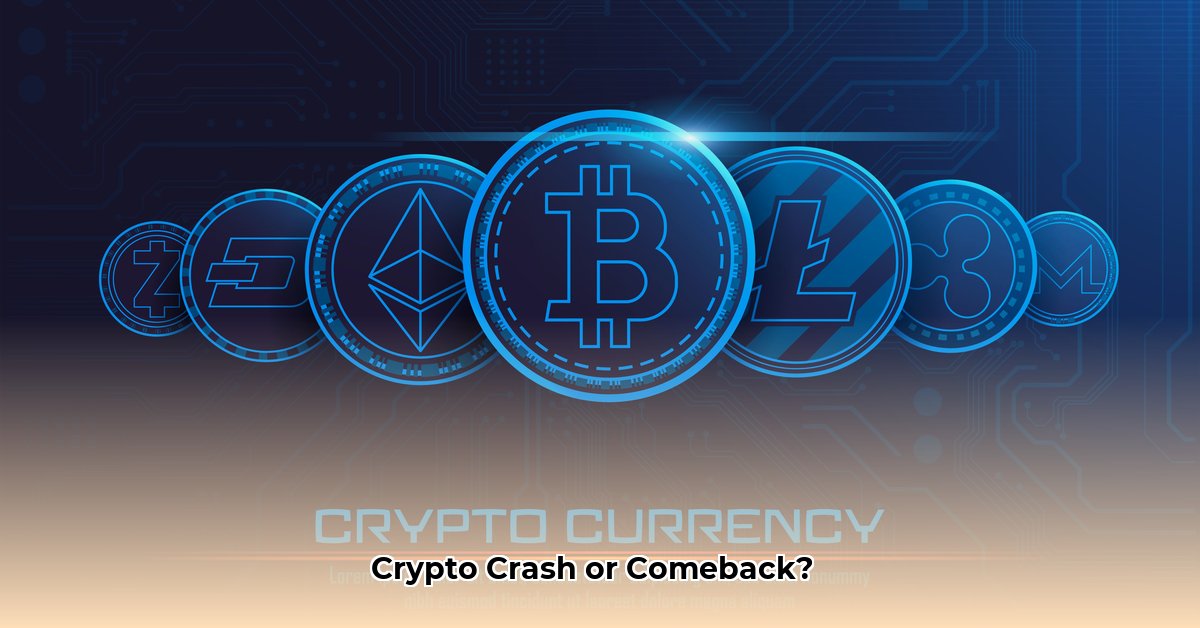Cryptocurrency can feel like a rollercoaster. Understanding those live price charts is key to navigating the market’s ups and downs, whether you’re a beginner or seasoned investor. The global crypto market cap is $3.36 trillion, a 1.7% change over the last 24 hours according to CoinGecko. For more on market cap, see this helpful explanation: market cap quotes. We’ll explore what’s driving the action and what it means for you.
Cryptocurrency Price Charts Live: A $3.36 Trillion Market Deep Dive
The total value of all cryptocurrencies sits at $3.36 trillion. What’s driving this massive market, including DeFi protocols, blockchain ecosystems, and asset allocation strategies? Let’s dive in and explore the factors shaping today’s crypto landscape.
The Stablecoin Story: A Beacon of Stability
Stablecoins play a significant role in the market, often representing a large portion of the daily trading volume. This suggests that many investors are seeking a safe harbor, preferring the relative stability of stablecoins (digital currencies pegged to a fiat currency like the US dollar) amidst the crypto market’s price swings. This hints at a market that’s still figuring itself out, balancing the thrill of big returns with managing risk.
Beyond Stablecoins: DeFi, NFTs, and GameFi Revolution
The growth we’re seeing is also fueled by exciting sectors like decentralized finance (DeFi), non-fungible tokens (NFTs), and play-to-earn (P2E) gaming, now often referred to as GameFi. The rapid rise of new cryptocurrencies (altcoins) presents both opportunities and risks. Sorting genuine projects from scams takes careful investigation. Decentralized exchanges (DEXs) are also becoming increasingly important, changing how people buy and sell crypto. Plus, improvements in “Layer-2” solutions aim to make crypto transactions faster and more efficient.
- Stablecoins offer stability amidst market volatility, attracting cautious investors.
- DeFi, NFTs, and P2E gaming (GameFi) are driving growth, but require careful evaluation.
- Bitcoin ETF approval signals increased interest from traditional investors, boosting market confidence.
Bitcoin ETFs, Regulation, and the Road Ahead
A major recent development is the US approval of Bitcoin exchange-traded funds (ETFs). This shows that more traditional investors are starting to take notice of Bitcoin and cryptocurrencies. Regulators are becoming more involved, trying to balance encouraging innovation with protecting investors from potential harm. International cooperation on regulations is also key for stable crypto markets worldwide. Clear and consistently applied regulation fosters trust and attracts wider participation.
Making Smart Moves in the Crypto Market: Advice for Different Players
The crypto market is full of both great chances and substantial risks. It’s essential to approach it wisely, based on your individual situation and risk tolerance.
| Stakeholder Type | Short-Term Strategy (0-1 Year) | Long-Term Strategy (3-5 Years) |
|---|---|---|
| Retail Investors | Diversify investments, focus on established cryptocurrencies with proven track records, manage risk carefully using stop-loss orders and position sizing techniques. | Consider a long-term investment plan aligned with your financial goals, stay updated on market trends, technological advancements, and consult with a financial advisor for personalized guidance. |
| Institutional Investors | Explore Bitcoin ETF opportunities but proceed with caution, conduct thorough due diligence, and seek expert advice on regulatory compliance. | Develop detailed crypto asset allocation strategies integrating crypto into broader portfolio management, implement robust risk mitigation tactics, and remain adaptable to evolving market conditions. |
| Cryptocurrency Exchanges | Prioritize cybersecurity, comply with changing regulations, enhance user experience (UX), and fostering a safe and reliable trading environment. | Expand into new markets, embrace innovative technologies like Layer-2 scaling solutions, and continuously improve operational efficiency and transparency. |
| Regulators | Provide clear and consistent guidelines for the crypto industry, promote investor protection, and foster responsible innovation. | Work towards international standards and regulatory cooperation to foster global crypto market stability, address regulatory arbitrage, and prevent illicit activities. |
| Developers | Prioritize scalability, security, and interoperability in your projects, undergo rigorous code audits, and fostering vibrant developer communities. | Explore emerging blockchain technologies, expand applications of decentralized finance (DeFi), and contribute to the development of robust and user-friendly crypto infrastructure. |
Looking at the cryptocurrency price charts gives you a quick snapshot of the market, but understanding the forces behind those numbers is just as important. Remember, the crypto world is constantly changing, so keeping a close eye on things and making informed decisions is your best bet.
How to Mitigate Risks Investing in Decentralized Finance (DeFi) Cryptocurrencies
The DeFi market, currently valued at over $3.36 trillion (as of a recent snapshot, July 2025), presents both exhilarating opportunities and significant challenges. Its decentralized nature introduces risks unlike traditional finance. How can we navigate this volatile landscape and protect our investments while balancing reward and financial security?
Understanding the DeFi Risk Landscape
DeFi’s inherent design, while innovative, creates unique vulnerabilities. Smart contracts, the backbone of DeFi, are susceptible to exploits. Market volatility, significantly impacting crypto prices, is ever-present. Regulatory uncertainty adds another layer of complexity. Impermanent loss, oracle manipulation, and rug pulls are also major concerns.
Strategies for Risk Mitigation
So, how to mitigate risks investing in decentralized finance (defi) cryptocurrencies? A multi-pronged approach is essential.
- Thorough Due Diligence: Before investing in any DeFi platform, conduct extensive research. Review the protocol’s code, examining security audits and developer experience. Look into its community and governance model. Evaluate the platform’s overall reputation and TVL (Total Value Locked). Performing due diligence can increase your investment success rate.
- Diversification: Diversify investments across various DeFi protocols, asset classes, and risk profiles. This reduces the impact of a single platform’s failure and exposure to specific vulnerabilities. Diversification has shown to reduce portfolio volatility.
- Risk Assessment: Carefully evaluate the risks associated with each DeFi project. Consider the smart contract security, the volatility of the underlying cryptocurrencies, the team’s reputation, and the regulatory climate relevant to your jurisdiction.
- Security Practices: Use strong, unique passwords, enable multi-factor authentication (2FA), and keep software and hardware wallets updated. Be cautious about phishing scams targeting your private keys and seed phrases. Never share your private keys with anyone.
- Insurance: DeFi insurance protocols are evolving. Explore this option to protect against smart contract failures, exploit losses, and impermanent loss. Understand the coverage scope and limitations.
- Start Small: Begin with smaller investments to test the waters and understand the platform before committing significant capital. This allows you to learn the intricacies of the platform and assess its reliability.
The Role of Regulatory Landscape
Different jurisdictions are taking various approaches. Keeping up-to-date on any legal changes is crucial for navigating this constantly evolving environment. Investing in compliance awareness and adhering to relevant laws reduces regulatory risks. Engaging with regulatory developments ensures proactive adaptation.
Actionable Steps for Different Stakeholders
| Stakeholder Group | Short-Term Actions | Long-Term Actions |
|---|---|---|
| DeFi Developers | Rigorous code audits by reputable firms; robust incident response plans; bug bounty programs; security best practices | Advocating for clear regulations; investing in advanced security technologies; fostering transparency and community engagement; developing standardized security protocols |
| Investors | Thorough due diligence; diversification; risk assessment; security best practices; start small; monitor investments | Participation in governance; advocating for standardized risk assessment frameworks; contributing to community resources; continuous education on DeFi risks and opportunities. |
| Regulators | Clear, balanced regulations that promote innovation and protect investors; encouragement of best practices; sandboxes for testing new DeFi applications | International collaborations for harmonized regulatory approaches; fostering dialogue with industry participants; providing educational resources to the public |
- Conduct thorough due diligence before investing in any DeFi project, assessing code, audits, and team.
- Diversify your investments across various DeFi protocols to mitigate risk and exposure.
- Stay updated on the evolving regulatory landscape to ensure compliance and adapt to changes.
Key Takeaways:
- DeFi offers high potential returns, but significant risks are inherent and require careful management.
- How to mitigate risks investing in decentralized finance (defi) cryptocurrencies involves careful due diligence, diversification, risk assessment, security, and continuous learning.
- Stay updated on the evolving regulatory landscape and adapt your strategies accordingly. Consider consulting with a financial advisor.
Crypto Price Chart Analysis: Decentralized Exchange (DEX) Volume Trends
The crypto market, currently valued at $3.36 trillion, presents a fascinating landscape. Let’s delve into the heart of the decentralized finance (DeFi) ecosystem and examine the explosive growth of decentralized exchanges (DEXs), as we analyze crypto price chart and volume relationships.
DEX Volume: A Rollercoaster Ride
Crypto Price Chart Analysis: Decentralized Exchange (DEX) Volume Trends
- Uncover Timeless Ancient Greece Female Names: A Guide to Choosing the Perfect Name - August 9, 2025
- Explore Ancient Greece Artifacts: Unveiling Iconic Treasures - August 9, 2025
- Unveiling Ancient Greek Marriage: Customs & Laws Revealed - August 9, 2025
















